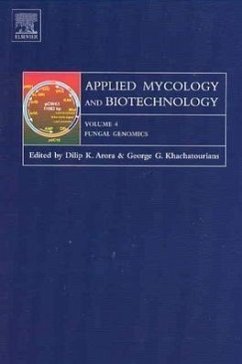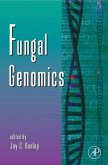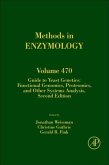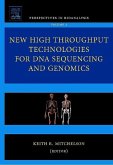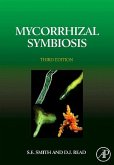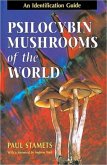Research in the genomics of a handful of fungi has matured at an unprecedented rate allowing comprehensive review. Developments in fungal genomics should be of great significance to new strategies in fields where disciplinary crossovers of fungal genomics, genes and their regulation, expression, and engineering will have a strong impact in dealing with agriculture, foods, natural resources, life sciences, biotechnology, informatics, metabolomics, pharmaceuticals and bioactive compounds.
This volume analyzes the commonly used molecular markers systems, and elaborates the development of biochemical genetics, which provides a model system that established the relationship between genes and enzymes. Current knowledge about the genomic and genetic variability of Candida albicans, the polymorphic fungus that is an opportunistic human pathogen of increasing medical importance, has been covered in detail. Current understanding of the genetics and functional genomic analysis of the most important fungal pathogens of staple food crops, rice and wheat among others is covered including chapters dealing with the genomics of economically important fungi such asMagnaporthe grisea, Aspergillus, Fusarium, Penicillium, Trichoderma, Rhizoctonia, Mycosphaerella graminicola, and entomopathogenic fungi. With several thousand recent citations, it is hoped that volume four will serve as a useful reference for knowledgeable veterans and beginners as well as those crossing disciplinary boundaries into the exciting field of biotechnology, genomics and bioinformatics of fungi.
This volume analyzes the commonly used molecular markers systems, and elaborates the development of biochemical genetics, which provides a model system that established the relationship between genes and enzymes. Current knowledge about the genomic and genetic variability of Candida albicans, the polymorphic fungus that is an opportunistic human pathogen of increasing medical importance, has been covered in detail. Current understanding of the genetics and functional genomic analysis of the most important fungal pathogens of staple food crops, rice and wheat among others is covered including chapters dealing with the genomics of economically important fungi such asMagnaporthe grisea, Aspergillus, Fusarium, Penicillium, Trichoderma, Rhizoctonia, Mycosphaerella graminicola, and entomopathogenic fungi. With several thousand recent citations, it is hoped that volume four will serve as a useful reference for knowledgeable veterans and beginners as well as those crossing disciplinary boundaries into the exciting field of biotechnology, genomics and bioinformatics of fungi.

